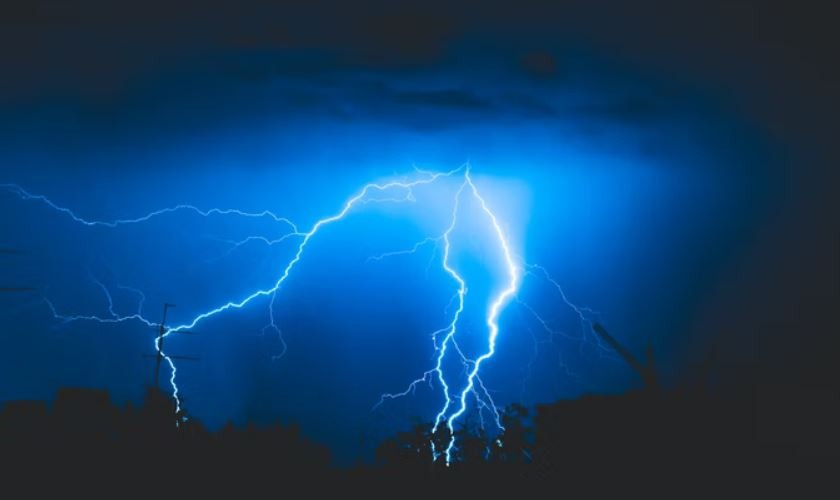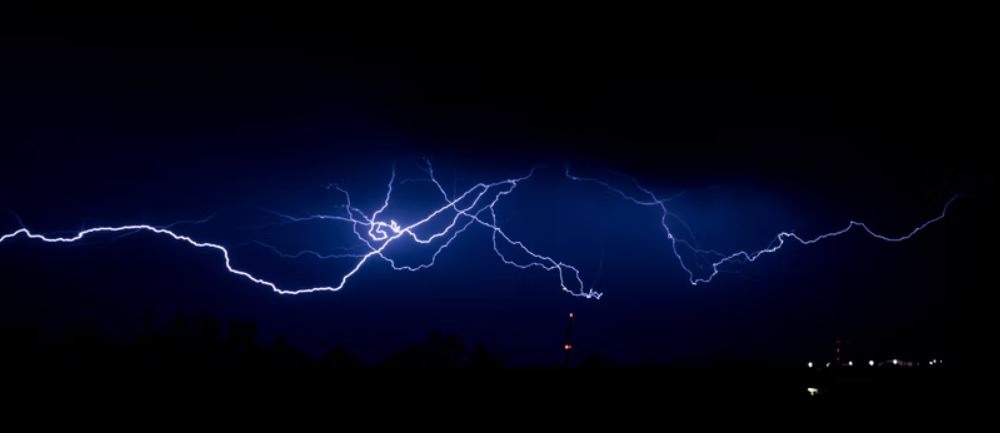Lightning is among the most astounding freak of nature that continues to fascinate human beings, both by its distinct beauty and raw power. It almost always appears in white. Yet, these powerful bolts come in a variety of colors like blue, yellow, orange, purple, and green. All these colors have different causes and meanings, proving that lightning flashes are more diverse than how we see them.
In this article, let’s focus on the second-most hue, blue lighting, and the rarest, green lightning, and know more about this impressive natural phenomenon.
What causes the colors of lightning?
Before tackling the blue and green lighting, it’s vital to know why different lighting hues are possible, providing some of the most miraculous images in the skies.
First, the colors of lightning primarily result from incandescence. Incandescence refers to the emission of light due to high temperatures. Lightning heats very quickly, with temperatures ranging between 18,000 to 50,000 degrees Fahrenheit. The sun’s surface is only estimated to be at 10,000 degrees Fahrenheit, making lightning fives times hotter!
In relation to this, variance in temperature results in color variations. Lightning with higher temperatures will appear as white, blue, and purple, while those with cooler temperatures will appear as yellow, red, and orange. To put it simply, the hotter it is, the closer its color will be to the end of the electromagnetic spectrum.
However, external factors may also affect how lightning appears, including the condition of the atmosphere, air, clouds, and distance. If the atmosphere and air are clear, the lightning will be its raw color. If there is dust present, the bolt may appear yellow to orange.
If there’s water, any drop of it may distort the light path, causing changes in color like red or pink. During the colder seasons, hail also produces visual effects that lead to color changes when lightning strikes.
Meanwhile, the distance between the lightning strike and the observer also plays a role. As the rays scatter, they travel and take on different elements in the atmosphere like oxygen and nitrogen molecules, impacting how a person perceives the color of the lightning.
All these factors combined determine what color a flash of lightning would be. Now that we’re aware of it, let’s now discuss and delve deeper into blue and green lighting.
What is Blue Lightning?
Blue lighting is the second-most lighting color that we see during thunderstorms. Its hue is primarily caused by its hot temperature, making it fall towards the end of the spectrum and reflecting its corresponding color.
Generally, blue lightning is also associated with high precipitation thunderstorms and the presence of hail. Its blue color is most likely acquired from the tiny atmospheric particles which scatter the light reflected from the sun.
The same principle explains why the sky is blue. Light enters the atmosphere, where it’s then deflected by tiny gas molecules in the air. Blue light has a shorter wavelength, which means it travels shorter. Thus, making it more scattered than the other colors, giving the sky its blue color.
Yet, not all blue bolts occur under the clouds. You might be surprised that there are strikes that happen above the active thunderstorms. Called blue jets, this type of blue lighting happens when the positively charged upper region of the cloud connects with the negative screening region above it. Two charges equalize each other resulting in the ejection of the bright blue electrostatic charge.
Blue jets travel very quickly, reaching incredible speeds of 100 kilometers per second. They then fan out and disappear, usually at heights of 40 to 50 kilometers. Yet, they are deemed to be normal lighting, just only emerging atop of the cloud. The catch is they are rarely observed from the ground as they happen briefly while concealed by the clouds.
What is Green Lightning?
On the other hand, green lighting occurs differently. Though considered rare, experts say that it is deemed as such only because we only don’t see green lighting often. They frequently happen but inside the thunderclouds and are obscured from human sight.
Also called a streamer, green lighting are spikes in electrical charges when positively charged molecules are pulled towards a negatively charged region within the cloud. When that happens, it completes the circuit, creating energy discharge. The bolt happens inside and remains unnoticed.
Yet, there’s one documented photograph where green lightning struck below the clouds. It was captured in May 2008 during the violent eruption of the Chaiten volcano in Chile. A dramatic and awe-inspiring sight, the bright green flash is seen emerging amidst the dark skies and the dark clouds.
The reason for the rare event is that electrical charges are found on the outside of volcanic ash clouds rather than the inside. With the erupting volcano spewing rock fragments and ash into the air, it collides and sparks these electrical charges.
Green lighting results from positively-charged surges being attracted and moved to the negatively-charged regions of the clouds. The distinct green hue is caused by gas excitation. With all the energy flow, the oxygen atoms get ‘excited’ and produce the green color. Comet tails and Aurora Borealis also get their bright green color due to the same reason.
Wrapping Up
Nature works majestically and creatively, providing us with different colors of lightning that bring vivid colors to our skies. Temperature, atmosphere, dust, air composition, and distance all impact the color of the bolt – giving us not only blue and green lightning but also the other colors brought by these factors.
Yet, while they’re beautiful, remember that lightning is extremely dangerous. So, while it’s exciting to seek moments of the strike and witness the different colors of lightning bolts, it’s better to stay indoors and safe from nature’s fury. Just observe far away or keep a safe distance while seeing the sky light up with these impressive lights!



